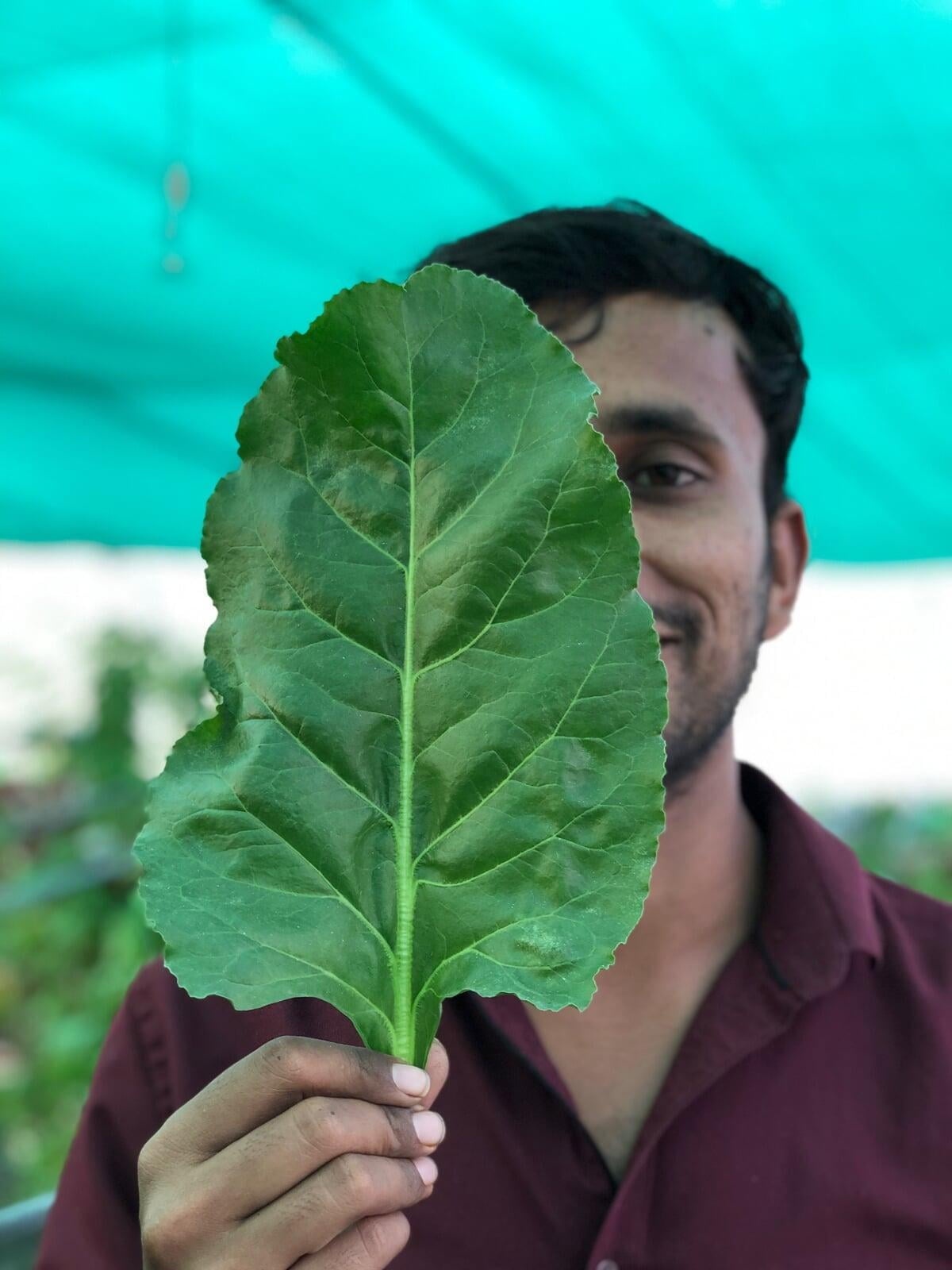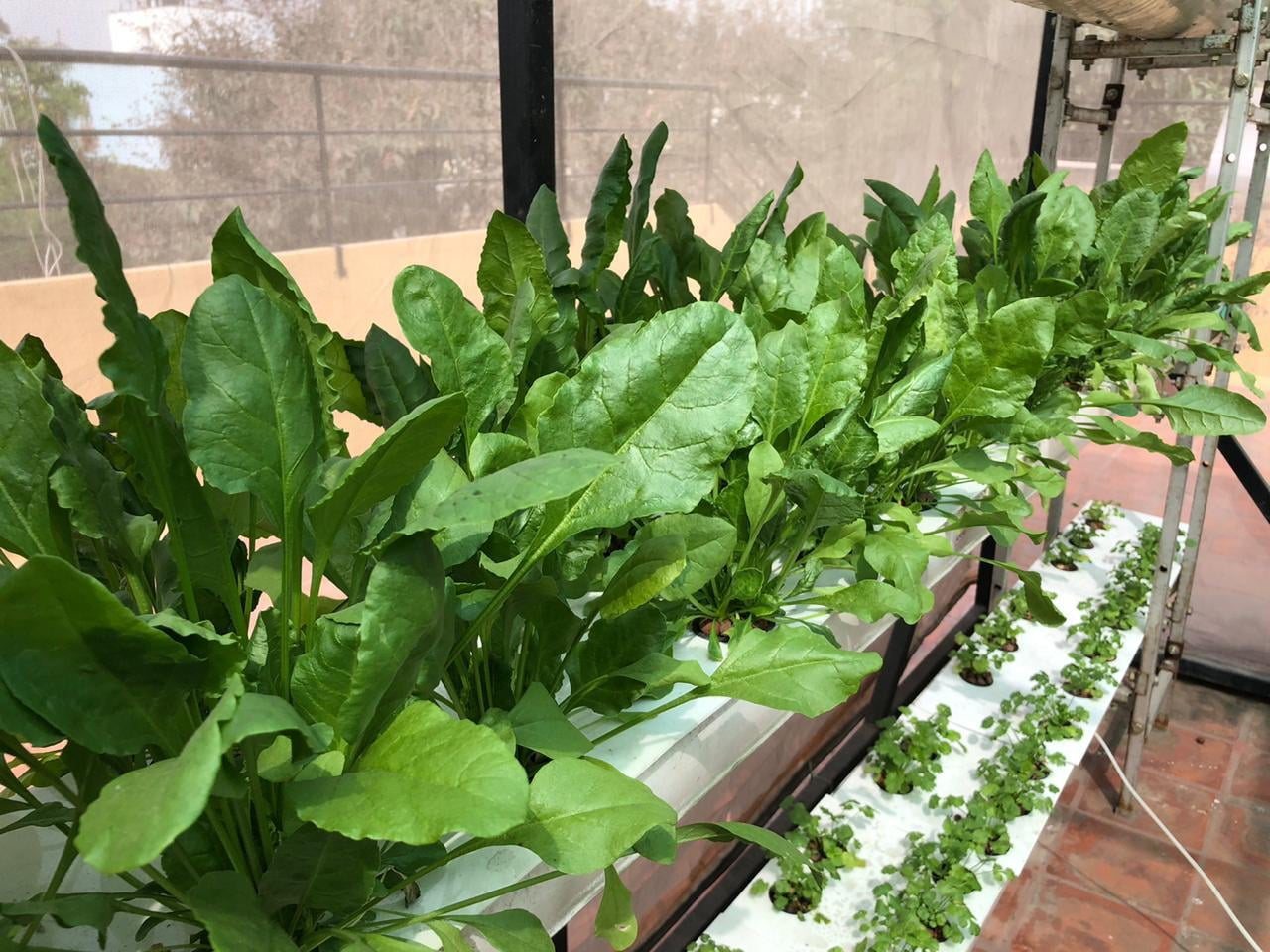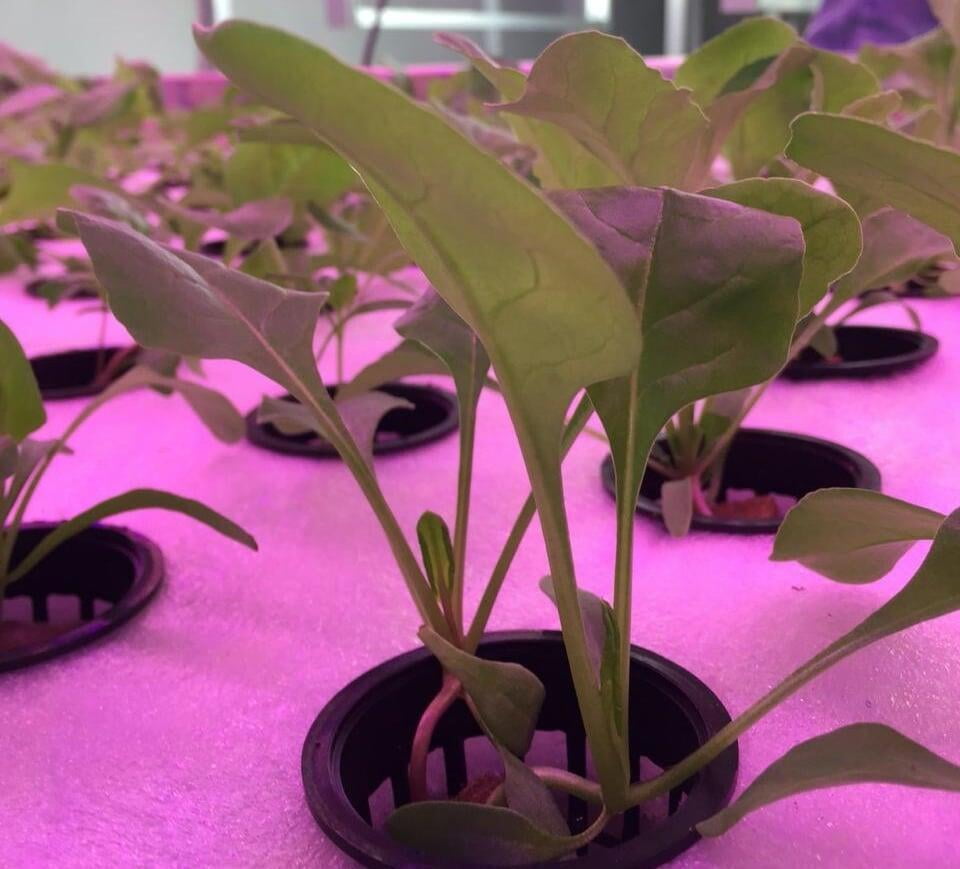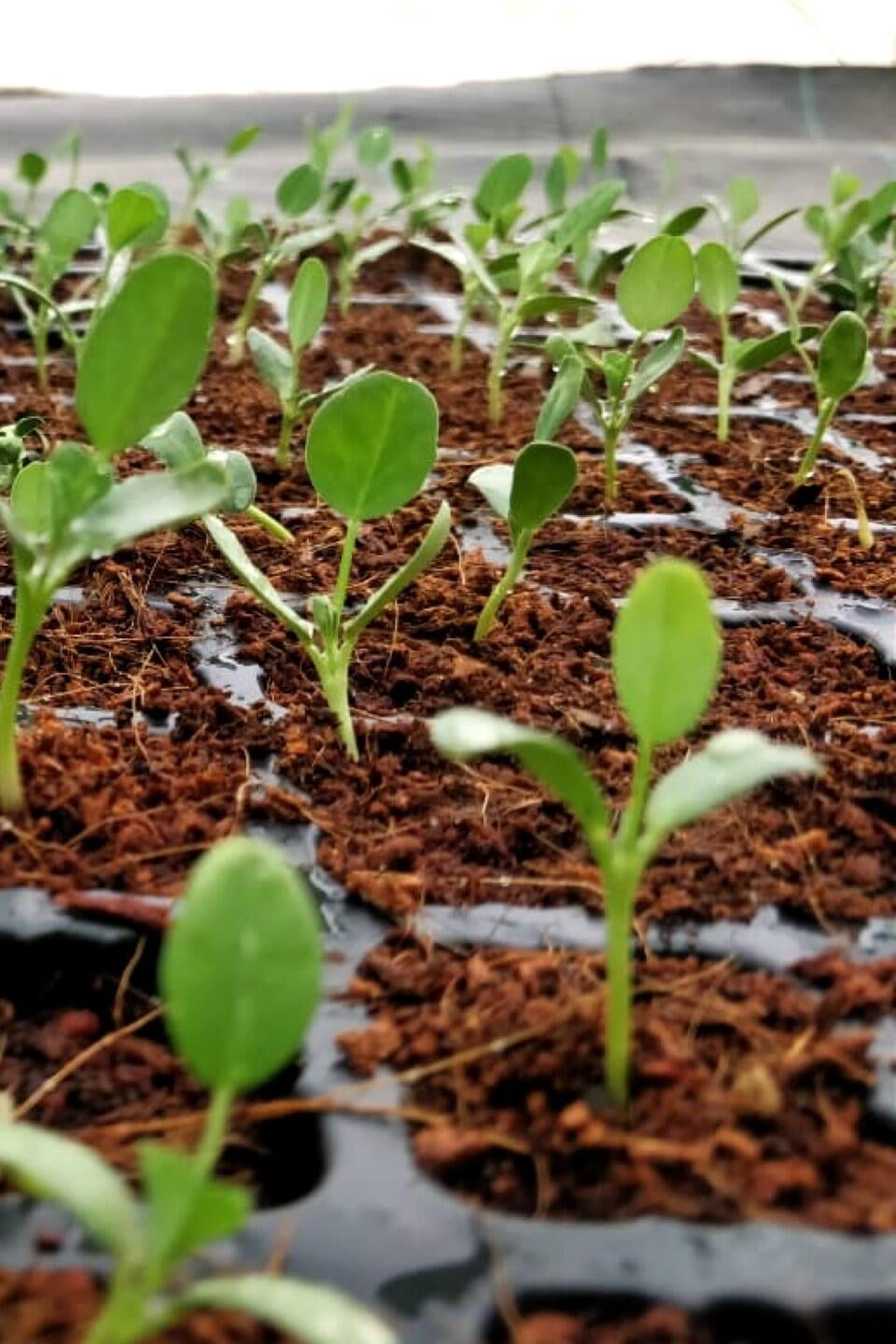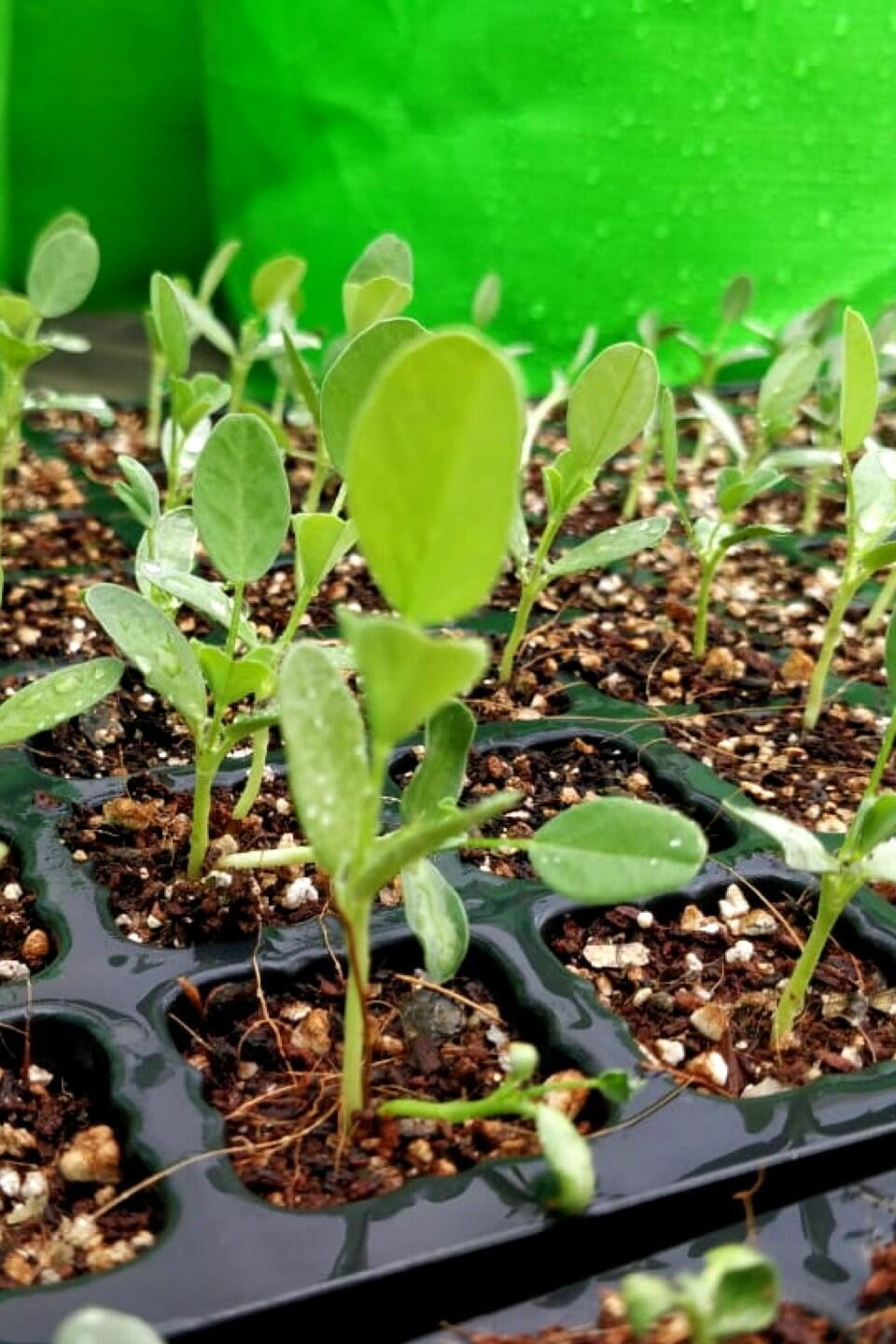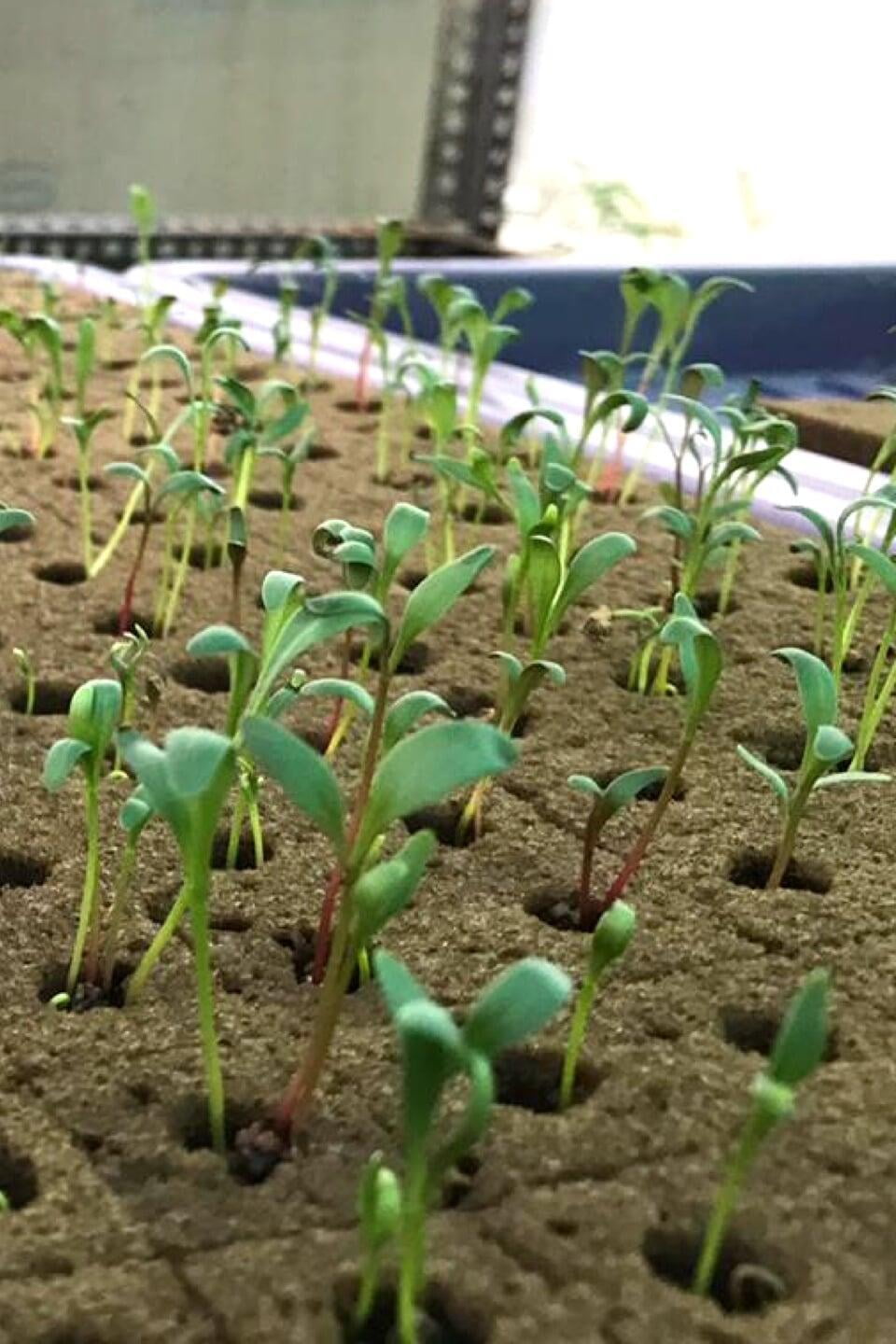We have successfully grown Spinach in following different types of Hydroponic setups.
- DWC troughs on a rooftop kitchen-garden.
- Soil-less substrate mix of coco-peat and fly-ash balls, on a rooftop kitchen-garden.
- NFT structures (both flat-bed as well as A-Frame) in a Greenhouse.
- Vertical towers in a Greenhouse.
- NFT structures in an indoor vertical farm under grow-lights.
- DWC structures in an indoor vertical farm under grow-lights.
With all of these methods, we have obtained a good yield. I must mention that the taste and quality of the crop were far better than anything we had experienced in the local market. You can choose either of these and try to grow Spinach at your end by following the simple steps given below.
Germinating Spinach Seeds
For germination, we have used the following three different kinds of media. (we have indeed used many more media like a sponge, cotton, rock-wool, sand, etc. but from a research perspective)
- Cocopeat
- A mix of cocopeat, perlite, and vermiculite
- Oasis cubes
In terms of results, the second one was the best performing, followed by cocopeat. Still, we never used it again after our research indicated that perlite is carcinogenic, a fact most of the sellers hide while selling perlite to the unsuspecting gardeners. Using Oasis cubes is the costliest and trickiest of all, but it helps in reducing labor and effort involved in transplanting and is often used in large commercial setups.
No matter what medium you choose to germinate, you need to ensure that the seeds are at least 5 - 10 mm inside the grow media, sufficiently moist, kept in a dark and warm place for germination. Depending upon the choice of rooting media, you may need to add water once/twice a day. If the conditions are right, germination should begin in 3-4 days.
Post germination, the tiny saplings need to see the light but in small quantities. To begin with, you can expose them to the morning and evening sunlight for 2-3 hours every day. Gradually increase the sun time to 4-6 hours a day. The external nutrition should also start at this stage. Provide nutrients through a foliar spray once every couple of days. You can prepare the nutrient solution using the same ratios as was created for pre-treating the germination media. Water the saplings with plain water as often as needed depending upon the weather conditions. Once the plant has developed 6-8 leaves, it is ready for transplant.
Pro Tip
To help germination and increase root mass, you can pre-treat the grow media with a mild nutrient solution. In our case, to prepare the nutrient solution for pre-treating the germination media we use CityGreens NPK Combo Pack. We add 0.5 ml each of N, K, and P in 1 liter of water and soak the grow media in it before sowing seeds.
Transplanting
Temperature
Spinach grows well at temperatures below 25° C though it can tolerate up to 30° C too. If the temperature is crossing 30°C, try to bring the heat down by either using a shade net or a fan or giving a foliar spray of plain water to the plant when the temperature is very high. If you fail to control the temperature, Spinach may bolt and eventually die.
Nutrition
For nutrition, follow the instructions provided by your nutrient manufacturer. If you are using CityGreen's nutrients, we recommend using the Greens combo pack for growing Spinach post the transplant stage. The package comes with a feed chart that you can follow during the growing process.
Light
Spinach grows exceptionally well if provided with 6 - 8 hours of direct sunlight. In the case of the indirect sun, the speed of growth will reduce considerably. If growing indoors, you will need to calculate the lighting period based on PPFD reaching the plants in your lighting setup. If you are not sure of what PPFD is reaching Spinach, try experimenting with different duration and distance combination to figure out what works best for you. In any case, do not use lights for more than 14 hours a day. The plants do need their dark period for certain bio-chemical processes. If you want healthy plants, do give them their dark period.
Humidity
Spinach needs a humidity of between 40% - 70%. In arid areas, moisture content can be increased by giving foliar spray of water. In extremely humid areas, proper ventilation can help in reducing the humidity.
